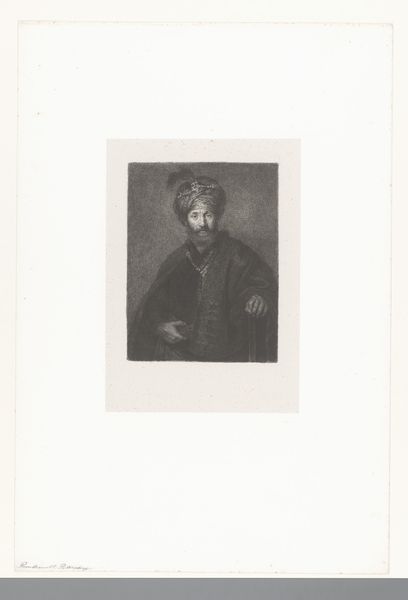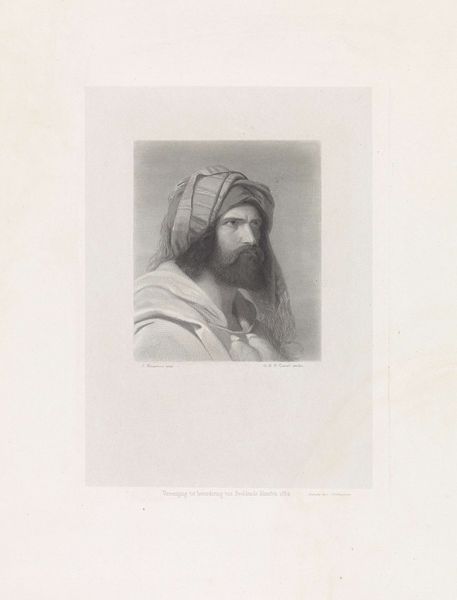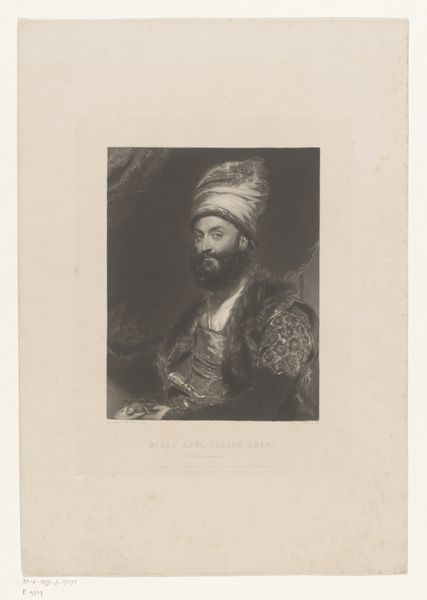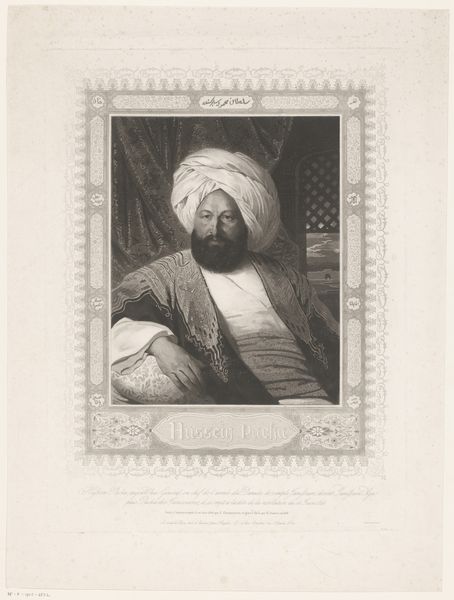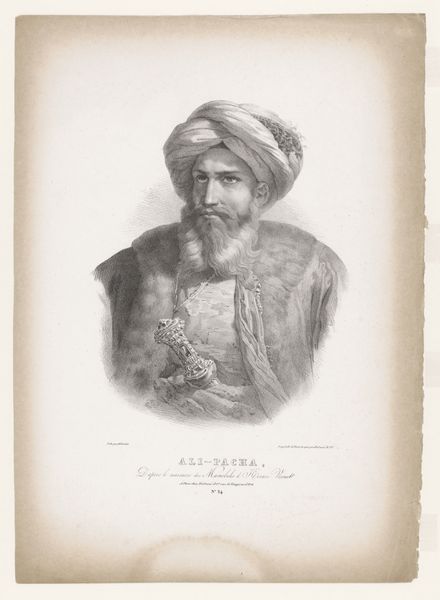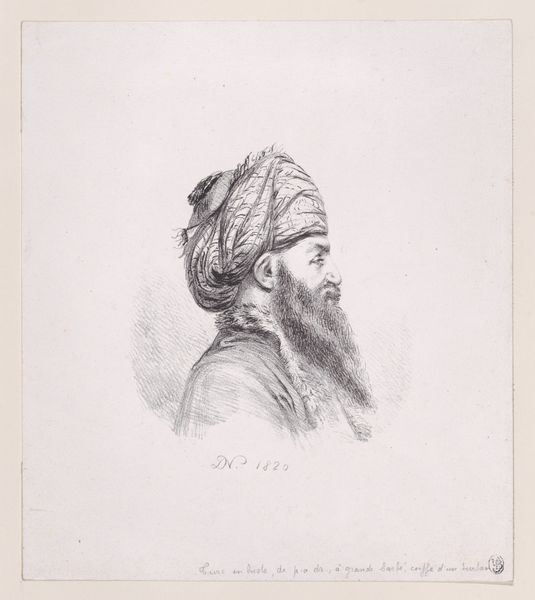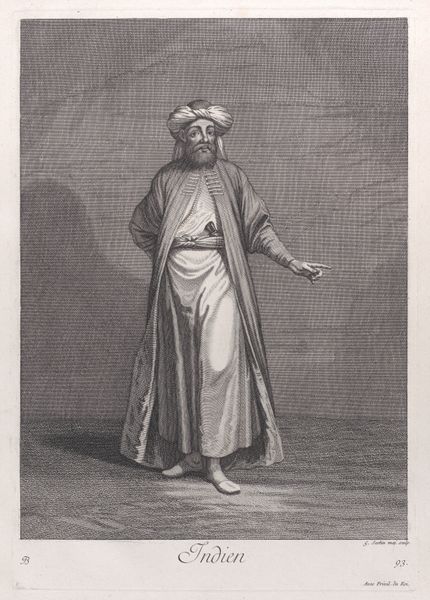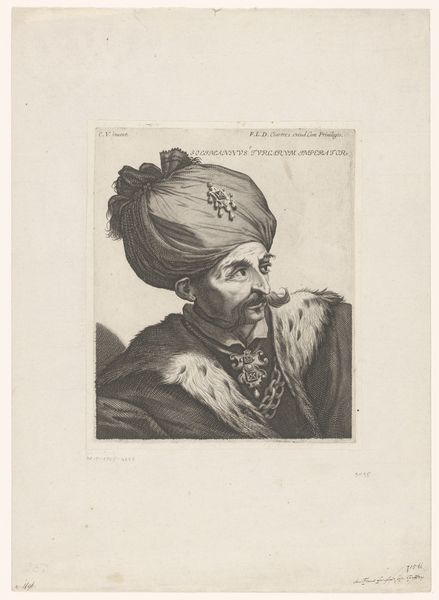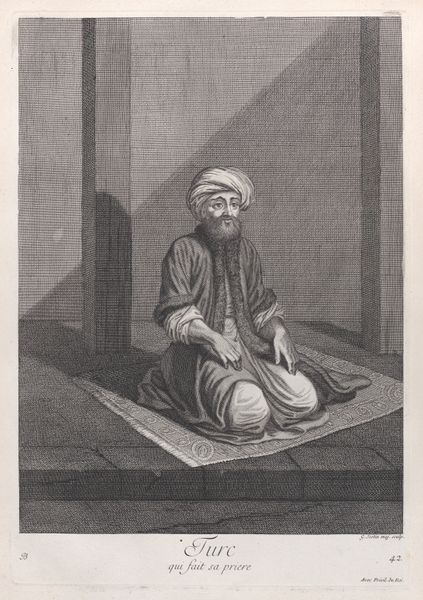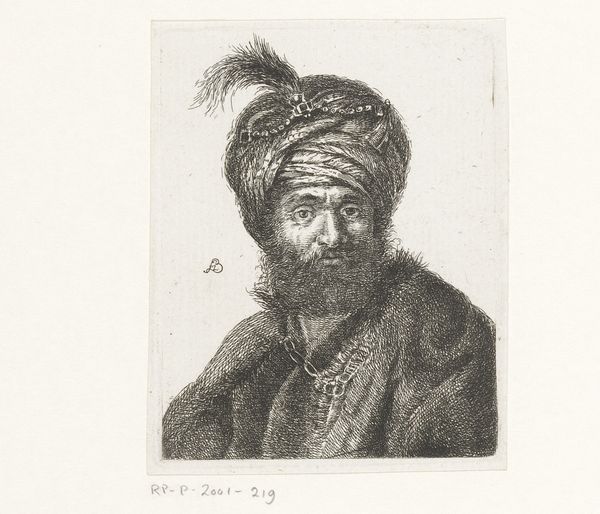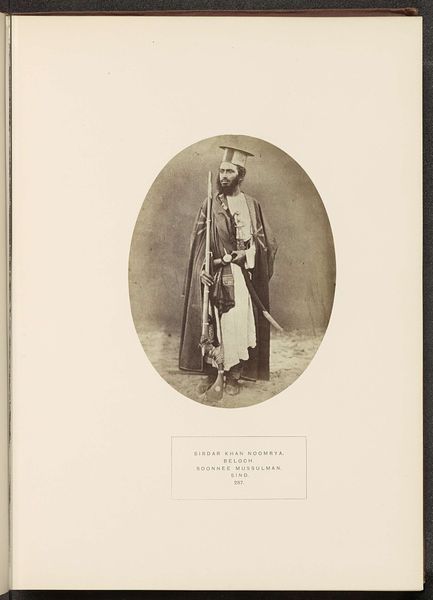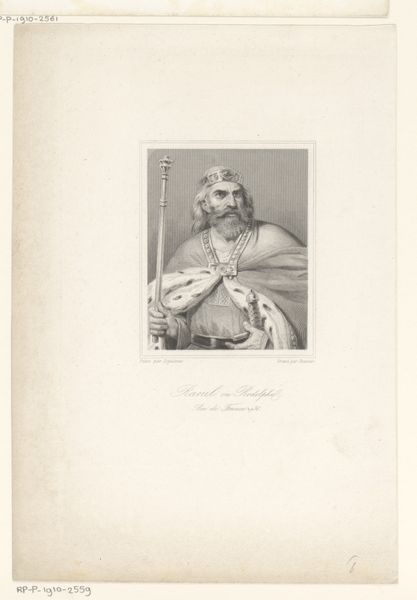
drawing, pencil, graphite
#
portrait
#
pencil drawn
#
drawing
#
pencil drawing
#
pencil
#
graphite
#
realism
Dimensions: height 365 mm, width 278 mm
Copyright: Rijks Museum: Open Domain
Hermanus Johannes van den Hout created this lithograph of a turbaned man sometime in the mid-19th century. The work presents some interesting questions about cultural representation in the Netherlands during the colonial era. This portrait creates meaning through the visual codes of exoticism and the historical associations of Dutch colonial trade. While we don't know for certain who the sitter was, the turban signals his foreign origins, likely from a region with which the Netherlands had trade relations. In the 19th century, the Dutch empire was expanding its reach in places like Indonesia. Images like this one would have shaped public perceptions of foreign people and cultures, even if those perceptions were distorted by stereotypes and assumptions of cultural superiority. To fully understand this print, we can consult archival sources like trade records, colonial office documents, and publications about foreign cultures. Art is always contingent on its social context, and our role as historians is to reconstruct that context as accurately as possible.
Comments
No comments
Be the first to comment and join the conversation on the ultimate creative platform.
